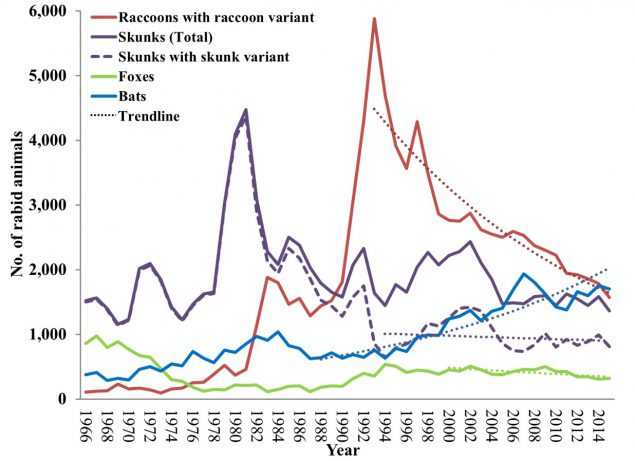Wild Animals
Wild animals accounted for 92.4 percent of reported cases of rabies in 2015. Bats were the most frequently reported rabid wildlife species (30.9 percent of all animal cases during 2015), followed by raccoons (29.4 percent), skunks (24.8 percent), and foxes (5.9 percent).

Although cross-species transmission of rabies does occur (for example infection of domestic dogs with the raccoon rabies variant), rabies virus variants are primarily transmitted within a single species that is the reservoir of that variant. Rabies virus variants associated with the major mesocarnivore species (such as raccoons, skunks, foxes, and mongooses) are distributed in distinct geographic regions.

Related Links
- Page last reviewed: July 5, 2017
- Page last updated: July 5, 2017
- Content source:





 ShareCompartir
ShareCompartir